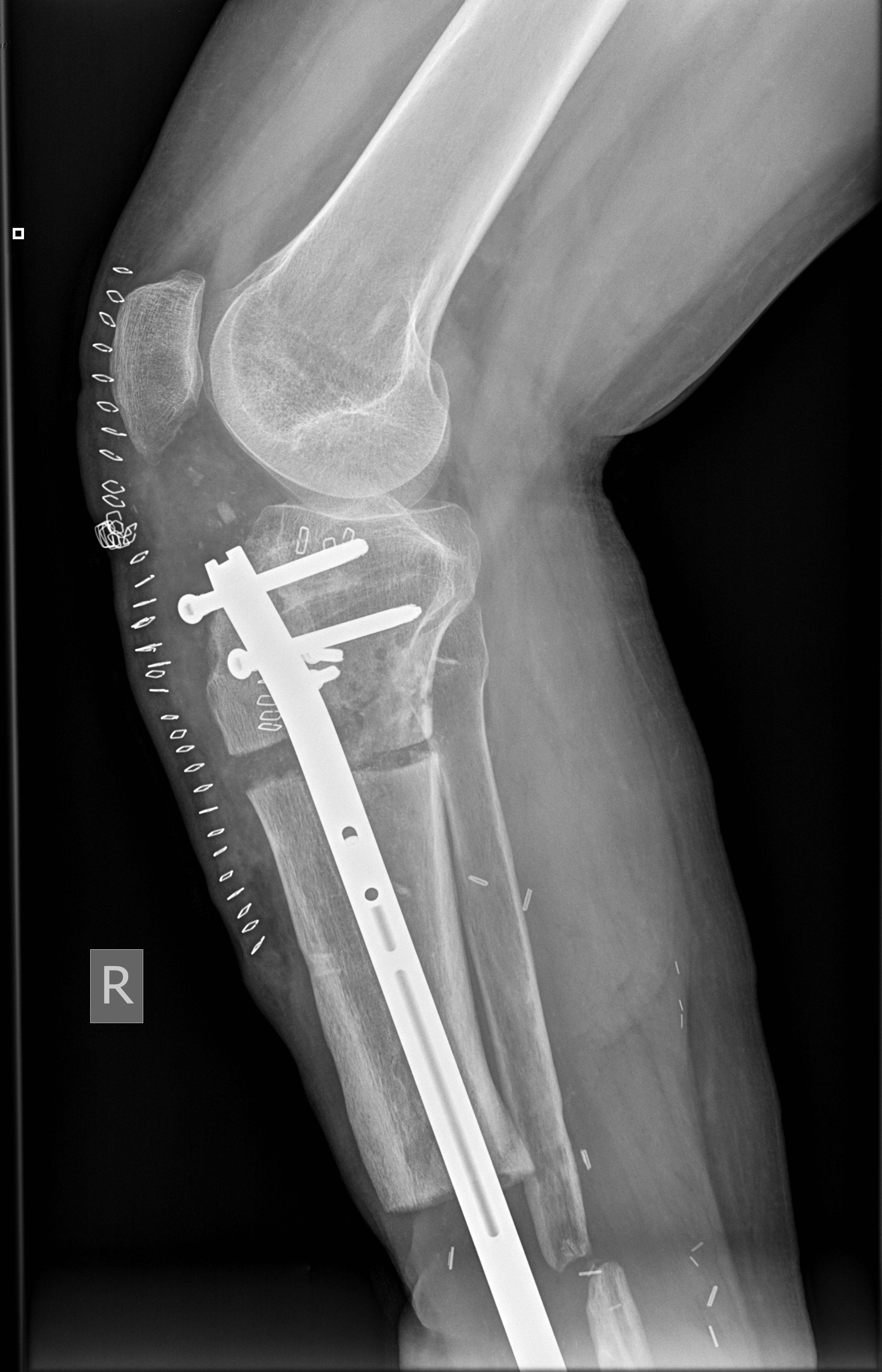By: Nadia Norcia Radovini, Communications Advisor, Sunnybrook Health Sciences Centre
Major trauma can cause devastating injuries to a victim's extremities. Sometimes open fractures result in a loss of large segments of bone. Limb salvage for these patients often requires a complex procedure known as bone transport to regrow lost bone. Traditional techniques require the patient to wear an external frame on their limb for many months and sometimes over a full year.
Now there is a better option. Sunnybrook is the first centre in Canada to offer a new version of bone transport using a novel intramedullary nail technique. This treatment eliminates the bulky external frame which is cumbersome and prone to infection and replaces it with an internal implant. Patients can now walk on their injured legs while undergoing treatment with an invisible internal support.
"Not only is the patient freed from an external fixation device, but now they are also able to walk while the healing takes place," says Dr. Richard Jenkinson, head of Orthopaedic Trauma for the Holland Bone & Joint Program at Sunnybrook. "This is a full year of mobility that wasn't possible before. The patient can move on with their lives much more easily."
The novel bone-lengthening technique allows patients who have lost a piece of their leg bone, through either traumatic injury or disease, to use a magnetized remote control to take a more active role in their own healing process.
Similar to a gamer using a joystick, a patient uses a hand-held magnetized controller outside their leg to manipulate specialized nail hardware implanted in their injured bone for 30 minutes three times a day. The internal nail slowly expands to lengthen and heal the bone, eventually filling in the missing gap.
 | It's a giant leap forward from the traditional approach, which rendered patients immobile for months on end with a cumbersome external frame attached to their limb and into the bone at multiple points with bars and adjustment knobs to force pressure through. The process can be slow – the bone is only lengthened by as little as a quarter of a millimetre each day. But the work adds up over time as the remote control precisely moves the bone segment up to 10 centimetres based on the specific needs of each patient. The new technique is also far less invasive and painful, which benefits patients more in the long run."Since using the magnet and nail technique, we have seen significant reductions in complications such as infection and the patient's healing time is reduced by months as a result," says Dr. Jenkinson, also an assistant professor in the Department of Surgery at University of Toronto. |